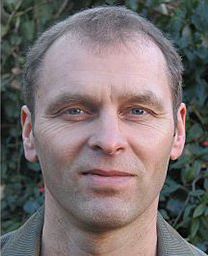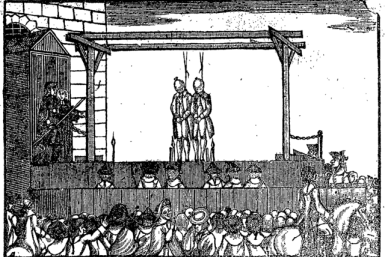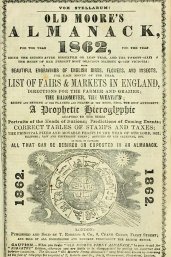Interviews
Interview Jeroen Salman: “The network allows researchers to learn about each other’s expertise”
Between 2016 and 2018, Jeroen Salman led the EDPOP project. What digital techniques has he used in the project? What role did Utrecht University Library and the Research Software Lab of the Centre for Digital Humanities (CDH) play in EDPOP? And are such roles ever played out?
The EDPOP project (European Dimensions of popular print culture) is a research project that uses innovative means to perform research into popular print culture in the early modern period (1450-1850). Think for instance of catchpenny prints, almanacs, pamphlets. As these prints were written in the vernacular, it has been assumed for a long time that popular culture was known locally, regionally or at the very most nationally. However, by doing comparative research, international project EDPOP showed that there were indeed European connections.

Jeroen Salman: ‘I wanted to set up an international network in the field of popular print culture. So I applied for a grant at NWO (the Dutch Research Council)) which was met. The network allows researchers to learn about each other’s expertise and exchange research ideas. An example of such a research question that is generated by the network is: why do some genres occur only in one country but not in others?’
‘I think that is an exciting question, but I have not been able to trace the answer yet.’
Could you give an example?
‘Take for instance the dying speeches. Treatises, short pieces about an often political or religious subject, which were published at the execution of criminals. In the early modern period such an execution was a public event at which all kinds of prints were distributed. The dying speeches are recorded stories from the criminal, containing a moral. “Listen carefully, I was in severe trouble, I had to go out stealing and in doing so I accidentally killed someone. Now I must hang, I accept my punishment, I beg for forgiveness and I hope that heaven still holds a place for me.” Sometimes these prints were already passed around during the execution, so people could take them home and read them at their own leisure.

The network tells you that dying speeches occur in England, occur in Spain, but not in our Dutch Republic. Why is that? Does it relate to the nature of the public executions, the level of literacy in a country, religious conventions, initiatives from publishers? Or maybe there is another genre that was used for these occasions? I think that is an exciting question, but I have not been able to trace the answer yet.
In addition to setting up an international network of experts, the project contained a digital component. We wanted to make an application in which all kinds of European sources were linked together, made suitable for searching and made ready for analysis. Because Utrecht University Library was one of the partners in EDPOP, we initially asked them to create such an application. After all, library people are used to catalogues and metadata, they are up to date on the developments relating to Linked Open Data and its necessary formats. They sketched an application on paper and built a small prototype, but for organizational reasons they could not contribute to the further development.’
‘After all, library people are used to catalogues and metadata.’
Who took over?
‘The developers of what is nowadays called the Research Software Lab. However, still in consultation with the university library. We had a rudimentary version of the VRE, the Virtual Research Environment as the application is called, at the end of three years of EDPOP. It is a digital environment in which you can harvest from several sources and make them accessible to researchers. The source we started out with was the Heritage of Printed Book Database, the HPB, a large international catalogue that brings together all kinds or research catalogues.’
So the VRE is not finished yet?
‘No, because the money is often not enough to build a complete application, so you need to go looking for new funding. Now Datahub SSH has given us funding so we can go on developing for a year. And to continue building, we try the FAIR Research IT call. The subject specialists of the university library help us in writing project proposals, because they know all about their collections, they know what parts have already been digitized, how researchers may profit from collections that are well-catalogued and up to date. In its turn, the lab benefits from the good accessibility of such collections Moreover, the collaboration with the programmers in the lab is very pleasant, because they are used to cooperate with researchers. They won’t build things we do not know how to handle.’
‘The money is often not enough to build a complete application, so you need to go looking for new funding opportunities.’

‘Within the scope of such a research project, it is very important that we are talking about the same genres. We need to agree about what is a pamphlet or what is an almanac, and the translations of these terms in other languages. That is why we are building a glossary, with the help of the expertise of other European experts. The glossary is almost finished now and will be published this summer. Finally it will be implemented in the VRE.
Let’s go back to the dying speech. Because we have the translation of this term, we can perform a systematic search in the VRE. Where and when does this genre occur in Europe? Could it be that a murder committed in England buzzes around in related genres in Europe? What kind of image is created of the criminal? The VRE provides an empirical basis, as it were, of a number of hypotheses and questions that were generated from the network.’
Will the VRE ever be finished?
‘There are quite a few things missing in the catalogues that make their data internationally available. Data is incomplete or cannot be accessed by our VRE. The programmers of the lab have time for further development until the end of December and then we are hoping to have an operational VRE for researchers to work with. Next we will be hunting for new funding to extend the functionality. I would like to implement a tool for image recognition. Researchers are not only interested in the text, but also in the images. But now images can only be searched by metadata, so for instance ‘man on the gallows’. What we would like for researchers is that they cannot only search by metadata, but also by visual characteristics. Is there an audience present at the execution? Is the place of execution correct from a historical point of view or is a template being used from another country?
Many prints have been digitized by now. So I make a cut-out of a man hanging on the gallows and I ask the search engine: find me all men on gallows in the same or different contexts. That is tricky for early modern prints, because you are dealing with woodcuts which are sometimes very crudely made, having bold lines and damages or with copperplates which have been coloured which causes distortions to the image. So the actual implementation of image recognition for this period cannot really be executed yet.’
Can the Research Software Lab help you with this?
‘They are familiar with the rudimentary principles of image recognition, but it is not yet as it should be. You need images, they must be annotated, algorithms must be trained. We need man-hours, and so money. But no worries, we will keep on searching for other funding opportunities.’

